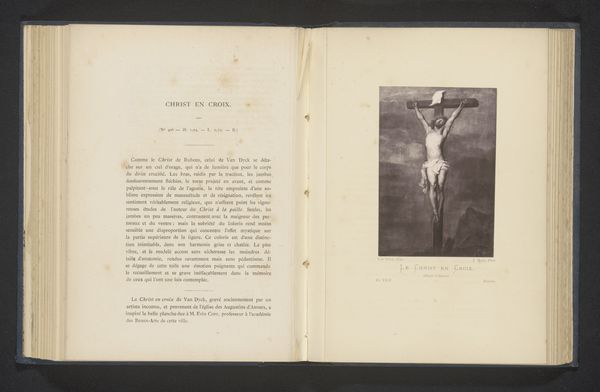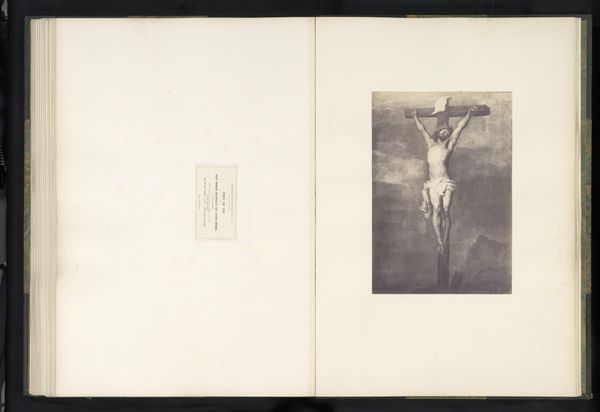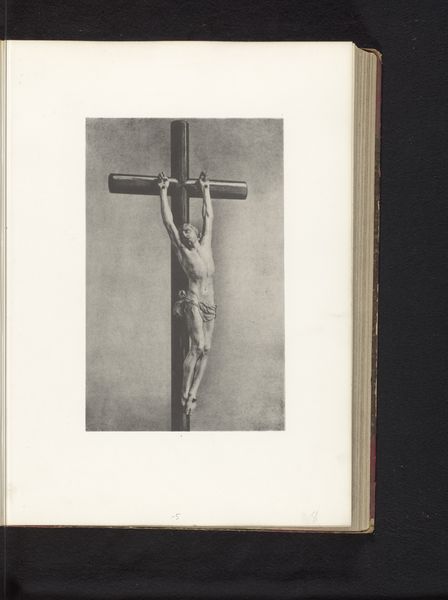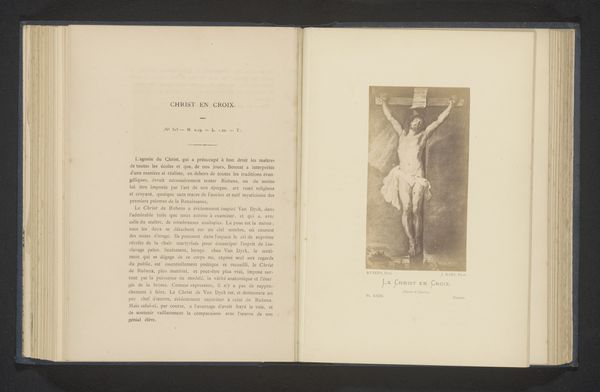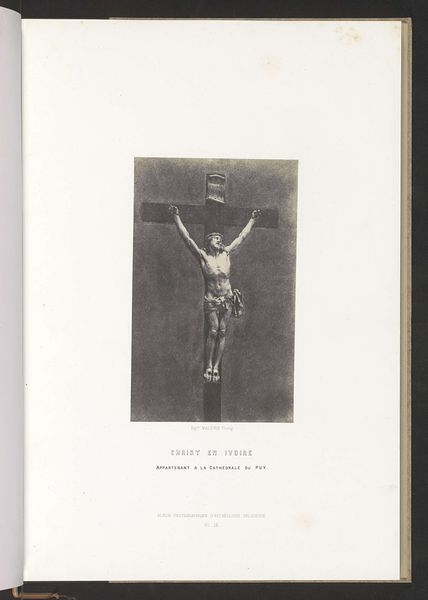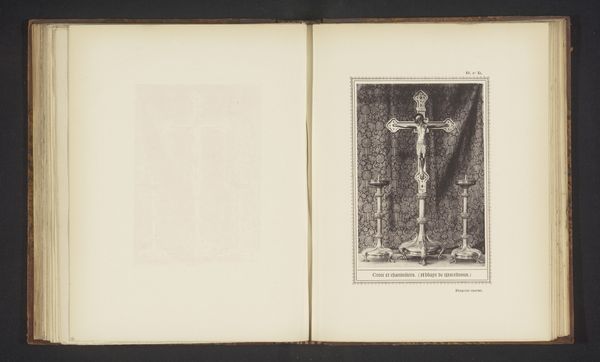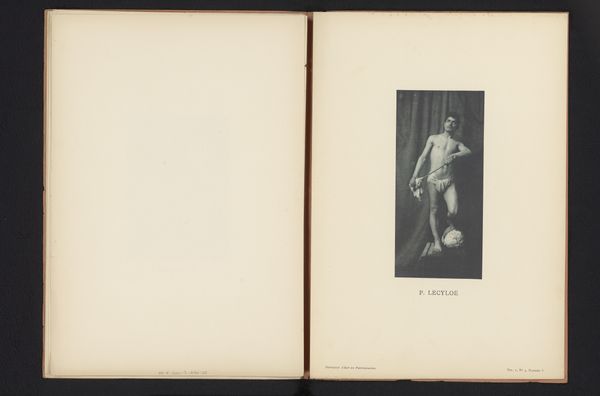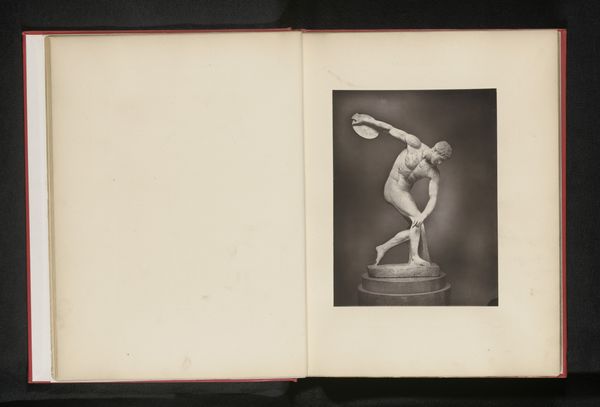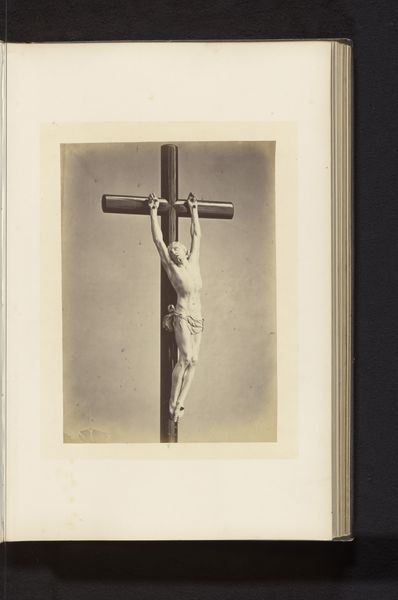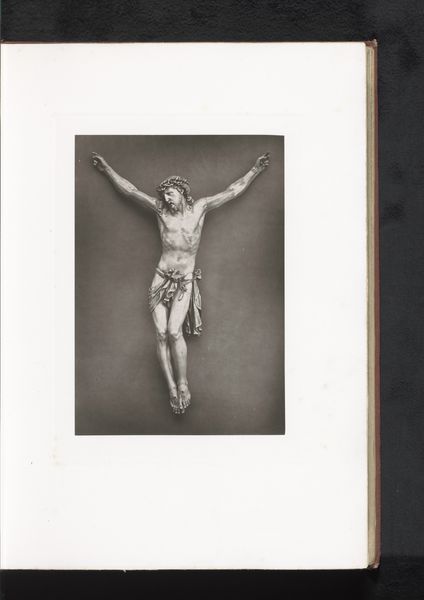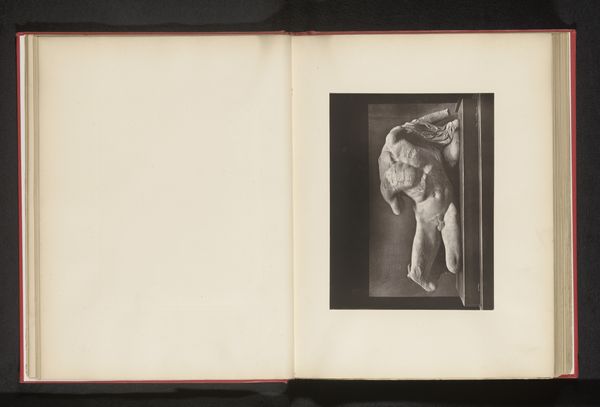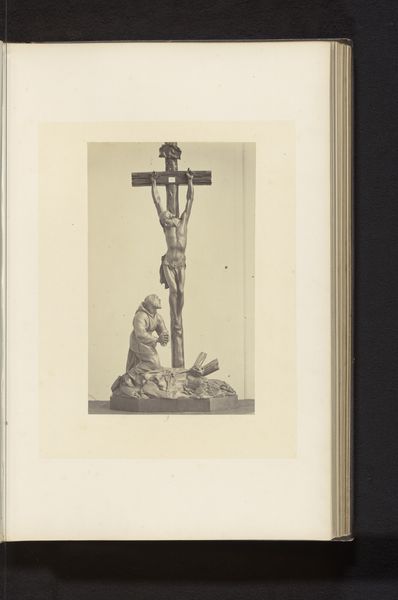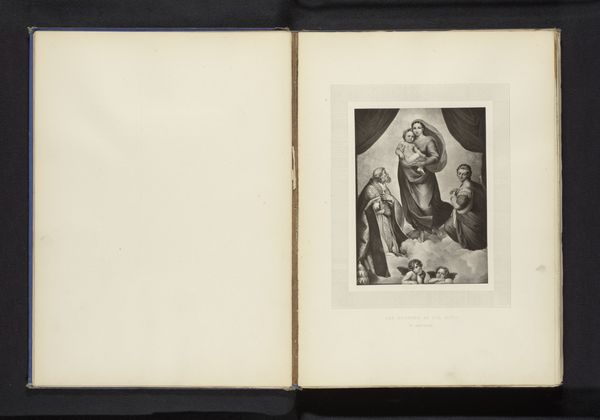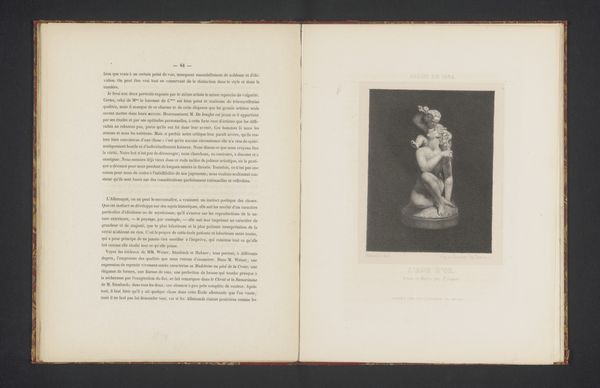
print, photography, gelatin-silver-print
#
portrait
#
aged paper
#
homemade paper
# print
#
paper texture
#
photography
#
personal sketchbook
#
folded paper
#
gelatin-silver-print
#
thick font
#
history-painting
#
delicate typography
#
thin font
#
historical font
#
small font
Dimensions: height 102 mm, width 64 mm
Copyright: Rijks Museum: Open Domain
Curator: Here we have an image titled “Crucifixus,” a gelatin-silver print by an anonymous artist, dating from before 1865. It’s housed right here at the Rijksmuseum. Editor: Immediately, the presentation as a page from a book strikes me—a devotional object almost. The figure is so stark against that aged paper. What do you make of it? Curator: It really is an intense piece, isn't it? The image is of a sculpture and presents us with the crucifixion, but contained within the presumed privacy of a book… the act of observing is strangely intimate, almost like looking through a personal sketchbook. Editor: I agree. Look at the paper texture—you can almost feel the fibers. And consider the labor involved; not just sculpting the original figure but photographing it, printing the gelatin silver image, and then binding it all together. This wasn't just art, it was manufacture. Do you think this piece challenges our traditional idea of craft? Curator: Absolutely. By bringing the artistic vision into reproducible form, the artist confronts this. We grapple with notions of aura and authenticity. Is this a window into the artist’s soul or a meticulously crafted copy? Editor: And it asks questions about the dissemination of images, doesn’t it? In a time before mass media as we know it, photography allowed for the reproduction and distribution of religious iconography. I am not religious but I like its clear production methods. Curator: I like what you point out! It feels like it takes the historical weight off of its very heavy topic and adds an almost delicate nature to it... almost mundane despite its very overt messaging. This photo print allows it a more accessible avenue for contemplation of such immense emotions. Editor: Well, considering its production and reproduction opens to our consideration and thinking, it is quite beautiful and thought provoking indeed. Curator: It does. An artifact capturing and presenting what makes us the most... human, both in its meaning and production. It offers an important view to the period where reproducibility changes not only art itself but its significance.
Comments
No comments
Be the first to comment and join the conversation on the ultimate creative platform.
